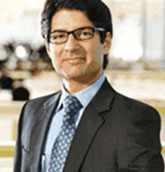5 minsSeptember 1, 2018
A mutual fund, as the name suggests pools money from multiple investors and invests the collected corpus in shares of listed companies, government bonds, corporate bonds, short-term money-market instruments, other securities or assets, or a combination
of these investments.
When you buy into a mutual fund, you pool your money along with other investors. As an investor in a respective scheme, you get units of the fund.
As an investor, you share the profits or losses of a respective mutual fund scheme in proportion to your investments.
Mutual Fund houses (also known as Asset Management Companies) normally offer a number of schemes, which are launched from time to time with different investment
objectives. The schemes could be open-ended or close-ended.
Open-ended funds are available for subscription throughout the year – even after their NFO (New Fund Offer) period. As an investor, you, have the flexibility to buy or sell units of these funds at a price linked to the fund's Net Asset Value
(NAV).
On the other hand, close-ended funds are available for subscription only during a specified period, i.e. when they arrive as new fund offer. Thereafter, as an investor, you can buy or sell the units of a close-ended fund only on a recognised stock
exchange (secondary market) as they are listed , but liquidity on the exchange is usually Nil to low. These funds are ‘close-ended’ for a particular period of time, e.g. 3 years, 5 years, 10 years, etc. At the end of the period,
the mutual funds transfer maturity value as per Net Asset Value into the registered bank account of the investors. Mutual Fund may also provide an option to investors to continue holding the respective close-ended scheme by converting it into
an open-ended one or may also provide an extended maturity period.
Now, coming to the various types of mutual funds…
The capital market regulator, the Securities and Exchange Board of India (SEBI) has categorised and rationalised mutual fund schemes into five broad categories:
- Equity Schemes;
- Debt Schemes;
- Hybrid Schemes;
- Solution Oriented Schemes and
- Other Schemes
Let’s understand each of these in detail…
- Equity Mutual Funds:
- Equity Mutual Funds have an objective to generate capital appreciation over the long term. Such mutual funds normally invest a major part of their corpus in equities. Naturally, equity funds have comparatively high risks. Therefore
from a suitability standpoint, investors with a high risk profile could consider investing in these funds with an investment time horizon of at least 5 years.
- Equity-oriented mutual funds are most suitable to plan long-term goals such as children’s education needs, their wedding expenses, and your own retirement.
- As per the capital market regulator’s diktat on mutual fund re-categorization, there are 10 sub-categories of equity mutual funds:
- Large cap Fund
- Large & Midcap Fund
- Midcap Fund
- Small cap Fund
- Multi cap Fund
- Dividend Yield Fund
- Value/Contra Fund
- Focused Fund
- Sectoral/Thematic Fund
- ELSS (Equity Linked Savings Scheme)
- Each scheme has distinct characteristics — they are defined by the regulator. For instance, a Large Cap fund is required to invest a minimum of 80% in equity & equity related instruments of large cap companies (i.e. first
100 companies on full market capitalisation basis).
- A Midcap Fund will invest a minimum 65% of its total assets in mid-cap stocks (i.e. companies from 101st to 250th on full market capitalisation basis).
- Similarly, a Multi-cap Fund invests across large cap, mid cap, small cap stocks with a minimum 65% investment in equity & equity related instruments.
- Likewise, equity mutual funds such as Value Funds and Contra Funds, follow a defined style of investing, namely value and contra.
- Sector and Thematic Funds have a mandate to invest in respective sector or a theme, viz. banking & financial services, pharma & healthcare as per the view formed and opportunities for the sector or theme.
- ELSS (also known as tax saving funds) is basically a diversified equity fund. Investments in ELSS are subject to a lock-in period of 3 years and eligible for a deduction (upto Rs. 1.5 lakh p.a.) under Section 80C of the Income Tax
Act, 1961.
- Debt Mutual Funds:
- Debt Mutual Funds invest in fixed income securities such as bonds, corporate debentures, Government securities, and money market instruments.
- The objective of Debt Mutual Funds is steady and regular income to investors, but varies in accordance to a sub-category.
- Therefore from a risk-return standpoint, they are less risky compared to equity-oriented mutual funds. But, remember debt-oriented are not completely risk-free or safe.
- Debt Mutual Funds are suitable for investors with a low-to-moderate risk appetite and who have a shorter investment time horizon of few weeks,or months or upto 3 years. Thus, to plan for short to medium term, they are ideal, bearing
in mind one’s liquidity needs.
- Under debt mutual funds too there are 16 sub-categories as defined by SEBI:
- Overnight Fund
- Liquid Fund
- Ultra-short duration Fund
- Low duration Fund
- Money market Fund
- Short duration Fund
- Medium duration Fund
- Medium to Long Duration Fund
- Long Duration Fund
- Dynamic Bond Fund
- Corporate Bond Fund
- Credit Risk Fund
- Banking and PSU Fund
- Gilt Fund
- Gilt Fund with 10-year constant duration
- Floater Fund
- Each type of these Debt Mutual Funds is distinctly defined by the regulator. For instance, an Overnight Fund will invest in overnight securities having the maturity of 1 day.
- Similarly, a Credit Risk Fund will invest a minimum 65% of its total assets in corporate bonds (below highest rated instruments), i.e. the investment will be predominantly in AA and below rated instruments.
- A Corporate Bond Fund will invest minimum 80% of its assets in corporate bonds. A Gilt Fund on the other hand will invest a minimum 80% of its asset in government securities.
- A liquid fund invests in debt and money market securities with a maturity of upto 91 days. Congruently, an ultra-short debt fund invests in debt and money market instruments, such that the maturity of the debt papers in the portfolio
is between 3 to 6 months.
- Liquid Funds and Ultra Short Term Funds are suitable to meet your short-term liquidity needs or goals. For example, you can park some savings for a vacation next year into a liquid fund. Other examples of short-term goals can be house
renovation, family vacation, your child’s school fees, and so on.
- Hybrid Mutual Funds:
- Solution Oriented Funds
- These funds work best with longer time horizons and hence help you, the investor, to plan for your life goals such as your children’s future needs (education and wedding expenses) and your retirement.
- As per the regulator’s mutual fund categorisation diktat, they will carry ‘Retirement Fund’ or ‘Children’s Fund’ in their complete scheme name.
- Retirement Funds have a lock-in of 5 years or your retirement age, whichever is earlier. Similarly, Children’s Funds have a lock-in of 5 years or till the child attains the age of majority, whichever is earlier.
- Other Mutual Fund Schemes
- In addition to the above, Index funds, Exchange Traded Funds (ETFs), Fund of Funds (FOFs) are categorised by the regulator as ‘other mutual fund schemes’
- Index Funds are passively managed as they seek to replicate a particular index, say S&P BSE Sensex or NSE Nifty 50. They maintain an investment portfolio that replicates the composition of the chosen index.
- ETFs are open-ended funds that are traded on the exchange. Like index funds, ETFs mimic the composition of a chosen index. Unlike an index fund, where the units are available at NAV,while ETFs are traded on the exchange and its price
regularly changes during the trading hours of the exchange.
- As per the regulatory guidelines, index funds and ETFs are expected to invest a minimum 95% of the assets of the scheme in securities of a particular index (which is being replicated/ tracked by the scheme).
- Fund of Funds invests money in other schemes of the same mutual fund house or other mutual fund houses. A minimum of 95% of the scheme’s total assets is invested in the underlying fund/s. So, FOFs facilitate holding a single
portfolio of funds rather than overcrowding your portfolio. These schemes provide the opportunity to build a portfolio of well researched fund portfolio across mutual funds.
To conclude…
Mutual funds are a promising investment avenue for wealth creation. There are a variety of mutual fund schemes, choose yours wisely in the journey of wealth creation. Take into consideration your age, risk profile, investment objectives, financial
goals, and the time horizon before the goals befall.
Barry Ritholtz, an American author, newspaper columnist, and equity analyst, has aptly said “When it comes to investing, there is no such thing as a one-size-fits-all portfolio.”
So, do not mirror your friends, relatives, or next door neighbours’ portfolios; because one man’s meat is other man’s poison. Investing is a personal, individual exercise.
Happy Investing!
Disclaimer: This article is for information purpose only. The views expressed in this article are personal and do not necessarily constitute the views of Axis Bank Ltd. and its employees. Axis Bank Ltd. and/or the author shall not be responsible for any direct / indirect loss or liability incurred by the reader for taking any financial decisions based on the contents and information. Please consult your financial advisor before making any financial decision
Mutual Fund investments are subject to market risk, read all scheme related documents carefully. Axis Bank Ltd is acting as an AMFI registered MF Distributor (ARN code: ARN-0019). Purchase of Mutual Funds by Axis Bank’s customer is purely voluntary and not linked to availment of any other facility from the Bank. *T&C apply














